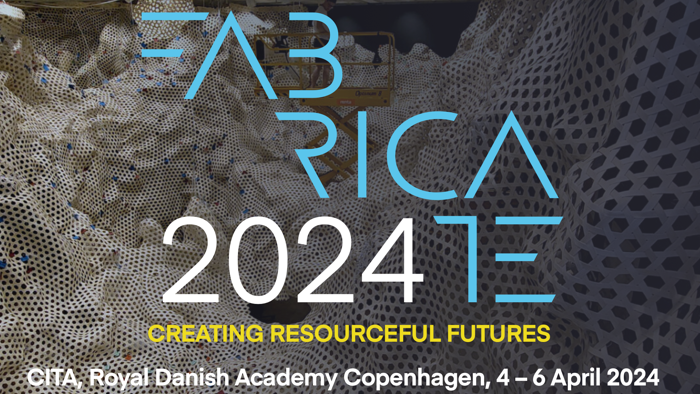



Cellulose Enclosure investigates the use of Artificial Intelligence (AI) for creating predictive models for unpredictable material practices in architecture. We combine geometric design aspects and parametric workflows with fabrication and material system constraints to bring an unruly material into architectural tolerance through a new digital tectonic expression specific to digitally designed, robotically produced biopolymer prints.

BioLum examines the making of a bio-luminescent micro architecture. The project is an interdisciplinary research enquiry sitting at the intersection of architecture, design and microbiology exploring the use of light-emitting bacteria as architectural materiality.
Biopolymer track
Biopolymer track
Bioluminescence track
Bioluminescence track
It argues that moving from a current reliance on the non-renewable materials of the geosphere, to the renewable and fundamentally cyclical materials of the biosphere can establish foundations for thinking alternative sustainable building practices.
By positioning architecture and the built environment as a particular case for bio-based materials, where the long lifespans of buildings support carbon storage, this project identifies the bottlenecks that limit their adaptation into the way architecture is thought, designed and built. Architectural design is traditionally understood through the durable and the permanent.
This project aims to challenge this foundation and bring forth the fundamental differences that bio-based materials engender. With focus on the embedded lifespans of living materials, the fundamental circularity and degradability of biomass and resulting transformative life cycles of the artefacts that they embody, this project proposes a holistic conceptualisation of architecture as an organism built out of living materials.
Timber track develops the first level of the Eco-Metabolistic framework that captures and instrumentalises the material heterogeneity of harvested materials.
It engages the scale of the architectural structure and uses locally-graded stiffness-variable glulam elements as case to develop integrative models for interfacing high-resolution material sensing with design-led optimisation.
It addresses the current knowledge gap by interfacing the registration of specific material properties within an individual resource, with the design-led optimisation of architectural elements. Bridging this gap enables the rethinking of the design and fabrication of glulam elements to radically minimise their material intensity by strategizing material grading and bending.
Biopolymer track develops the second level of the Eco-Metabolistic framework that captures and instrumentalises the temporal plasticity of designed bio-based materials while expanding the concept of designed heterogeneous material systems.
It engages the scale of the architectural enclosure and uses functionally graded chitin-based cellulose-reinforced bio-polymer as case to develop methods for predicting, designing and grading the lifespans of bio-based materials.
It addresses the current knowledge gap by characterising their temporal behaviours and interface these with a design-led functional grading of element geometry and composition to produce design models for steering material lifespan.
The Bioluminescence Track develops the third level of the Eco-Metabolistic framework that captures and operationalises the living performances of bio-based materials while expanding the concept of temporal plasticity and emergent material heterogeneity of living systems.
It engages the scale of architectural performance and uses bioluminescent bacteria as case to functionalise living organism as an architectural light source.
It addresses the current knowledge gap by modelling the performance of bioluminescent bacteria; capturing, charactering and predicting how their life states, performance and propagation respond to design-led tuning of their host-media, its form, and its nutrition.
The Continual Construction track sees the creation of the shared demonstrator-testbed associated to the investigations in the three first tracks. It monitors performance and evaluates design criteria of the three material cases through sited environmental change and creates new models of maintenance and intervention by proposing novel practices of participatory continual construction.
It engages ...
It addresses ...
The central concern of the project is to build and evaluate the Eco-Metabolistic framework; to propose a holistic architectural representation enabling new modes of design thinking in a bio-based design paradigm. This core task, aims to identify novel representations for heterogeneity, behaving and living architecture.
It engages ...
It addresses ...








It argues that moving from a current reliance on the non-renewable materials of the geosphere, to the renewable and fundamentally cyclical materials of the biosphere can establish foundations for thinking alternative sustainable building practices.
By positioning architecture and the built environment as a particular case for bio-based materials, where the long lifespans of buildings support carbon storage, this project identifies the bottlenecks that limit their adaptation into the way architecture is thought, designed and built. Architectural design is traditionally understood through the durable and the permanent.
This project aims to challenge this foundation and bring forth the fundamental differences that bio-based materials engender. With focus on the embedded lifespans of living materials, the fundamental circularity and degradability of biomass and resulting transformative life cycles of the artefacts that they embody, this project proposes a holistic conceptualisation of architecture as an organism built out of living materials.

Cellulose Enclosure investigates the use of Artificial Intelligence (AI) for creating predictive models for unpredictable material practices in architecture. We combine geometric design aspects and parametric workflows with fabrication and material system constraints to bring an unruly material into architectural tolerance through a new digital tectonic expression specific to digitally designed, robotically produced biopolymer prints.

BioLum examines the making of a bio-luminescent micro architecture. The project is an interdisciplinary research enquiry sitting at the intersection of architecture, design and microbiology exploring the use of light-emitting bacteria as architectural materiality.
Biopolymer track
Biopolymer track
Bioluminescence track
Bioluminescence track
Timber track develops the first level of the Eco-Metabolistic framework that captures and instrumentalises the material heterogeneity of harvested materials.
It engages the scale of the architectural structure and uses locally-graded stiffness-variable glulam elements as case to develop integrative models for interfacing high-resolution material sensing with design-led optimisation.
It addresses the current knowledge gap by interfacing the registration of specific material properties within an individual resource, with the design-led optimisation of architectural elements. Bridging this gap enables the rethinking of the design and fabrication of glulam elements to radically minimise their material intensity by strategizing material grading and bending.
Biopolymer track develops the second level of the Eco-Metabolistic framework that captures and instrumentalises the temporal plasticity of designed bio-based materials while expanding the concept of designed heterogeneous material systems.
It engages the scale of the architectural enclosure and uses functionally graded chitin-based cellulose-reinforced bio-polymer as case to develop methods for predicting, designing and grading the lifespans of bio-based materials.
It addresses the current knowledge gap by characterising their temporal behaviours and interface these with a design-led functional grading of element geometry and composition to produce design models for steering material lifespan.
The Bioluminescence Track develops the third level of the Eco-Metabolistic framework that captures and operationalises the living performances of bio-based materials while expanding the concept of temporal plasticity and emergent material heterogeneity of living systems.
It engages the scale of architectural performance and uses bioluminescent bacteria as case to functionalise living organism as an architectural light source.
It addresses the current knowledge gap by modelling the performance of bioluminescent bacteria; capturing, charactering and predicting how their life states, performance and propagation respond to design-led tuning of their host-media, its form, and its nutrition.
The Continual Construction track sees the creation of the shared demonstrator-testbed associated to the investigations in the three first tracks. It monitors performance and evaluates design criteria of the three material cases through sited environmental change and creates new models of maintenance and intervention by proposing novel practices of participatory continual construction.
It engages ...
It addresses ...
The central concern of the project is to build and evaluate the Eco-Metabolistic framework; to propose a holistic architectural representation enabling new modes of design thinking in a bio-based design paradigm. This core task, aims to identify novel representations for heterogeneity, behaving and living architecture.
It engages ...
It addresses ...





The Eco-Metabolistic Architecture project has received funding from the European Research Council (ERC) under the European Union’s Horizon 2020 research and innovation programme (grant agreement No 101019693).
The Eco-Metabolistic Architecture project has received funding from the European Research Council (ERC) under the European Union’s Horizon 2020 research and innovation programme (grant agreement No 101019693).